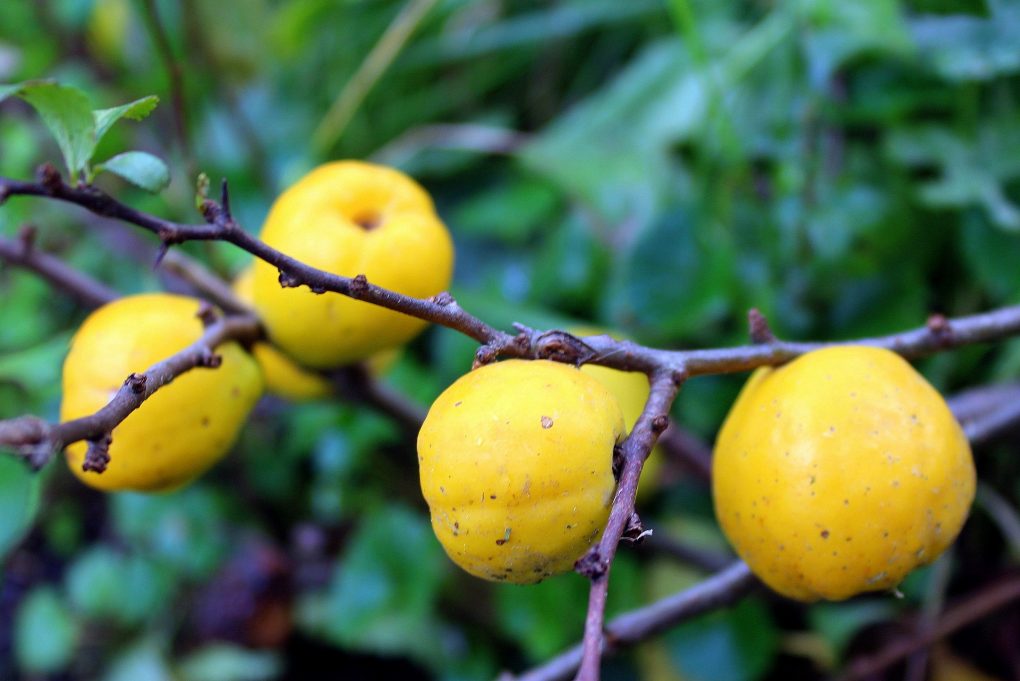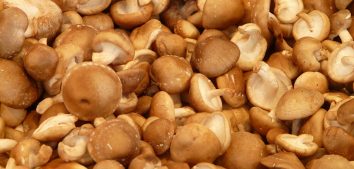
Japanese Quince – try it in your kitchen!
The fruit of Japanese quince is often confused with the fruit of common quince. These species, despite some common features, show many differences in composition and nutritional value.
Japanese quince shrub blooms in late April and early May. It has numerous, small, red flowers. The fruits of Japanese Quince, harvested in September, have a characteristic sweet flavor and a significant nutritional value. These fruits look like apples, they are yellow, round, of irregular shape and of various sizes. They weren’t very common until recently and although they might not be as popular as other fruits, they’re definitely worth trying and including in our menus.
Health properties
Japanese quince has been appreciated in China, where dried fruits, called Mugua, are widely used to treat various diseases, such as rheumatism, asthma and colds. They were also believed to have anti-diarrheal and anti-emetic properties, they were thought to alleviate symptoms of beriberi, dysentery, cholera, enteritis, and other ailments. They were also used in stomach diseases. An infusion is made from seeds to help treat inflammation of the throat, hoarseness, or gastroenteritis. The fruit tincture helps in the digestion process and reduces blood pressure while the seeds are used as a laxative.
Japanese quince fruits have relatively strong antioxidant properties when compared to other fruits. Studies carried out far have also shown their anti-inflammatory, analgesic, antispasmodic, and antibacterial properties. They also support the immune system.
Nutritional value
Japanese quince fruits are low in simple sugars and rich in fiber. They are also characterized by a high content of vitamin C, which shows high stability during storage and processing. Compared to other fruits, Japanese quince is rich in minerals such as magnesium, sodium, copper, zinc, phosphorus, iron and molybdenum. In terms of iron and molybdenum content, quince fruit is one of the richest. They are also rich in organic acids. Quince seeds contain about 10-20% oil, which consists mainly of linoleic, oleic and palmitic acid.
Use in cosmetics
The quince fruit are used in cosmetics. Macerate from the seeds is used to wash and cleanse the face, soothe irritation and inflammation of the skin. They are also used to make emulsions, creams and body lotions. It has also been shown that quince oil has a potential protective effect against the harmful effects of sunlight. It is also often used to relieve burns.
Use in cooking
Until recently, quince fruit was hardly used in our homes. Currently, they are becoming more and more popular. The fruits of this unusual shrub are valued mainly because of their extraordinary resistance to external factors. They tolerate storage and transport well, and remain fresh long after picking. They can be stored in a cool place for up to several months. Brown seeds and a slightly sticky peel testify to their maturity. Their great advantage is also a strong and pleasant aroma. Unfortunately, ripe fruit is hard, with a tart and sour taste and that’s why they are not eaten raw and must be processed before consumption.
In my kitchen, I use quince fruit to make jams, preserves, juices and lemonades. You can also make ice cream, liqueur and wine. Quince fruit juice is very acidic and can be used as an acidifying ingredient to replace lemon juice. Dried fruits are a valuable raw material in the production of fruit teas, enriching their flavor and taste.
Quince seed oil
Japanese quince seeds can be used to obtain oil. The pressed oil has an intense yellow color due to the high content of carotenoids and a characteristic pleasant smell. Its important feature is high durability, therefore it can be safely stored even for a long time.
Bibliography:
- Antoniewska A, Rutkowska J, Adamska A. Charakterystyka owoców pigwowca japońskiego oraz ich zastosowanie w przemyśle spożywczym. Żywność. Nauka. Technologia. Jakość. 2017; 24, 2 (111): 5-15.
- Banaś A, Korus A. Walory prozdrowotne owoców pigwowca japońskiego (Chaenomeles japonica). Med Rodz. 2016; 19 (2): 83-85.
- Baranowska-Bosiacka I, Bosiacka B, Rast J, Gutowska I, Wolska J, Rębacz-Maron E, Dębia K, Janda K, Korbecki J, Chlubek D. Macro- and microelement content and other properties of Chaenomeles japonica L. fruit and protective effects of its aqueous extract on hepatocyte metabolism. Biol Trace Elem Res. 2017; 178 (2): 327-337.
- Nahorska A, Dzwoniarska M, Thiem B. Owoce pigwowca japońskiego (Chaenomeles japonica (Thunb.) Lindl. ex. Spach) źródłem substancji biologicznie aktywnych. Post Fitot. 2014; 4: 239-246.










Comments No Comments
Join the discussion…